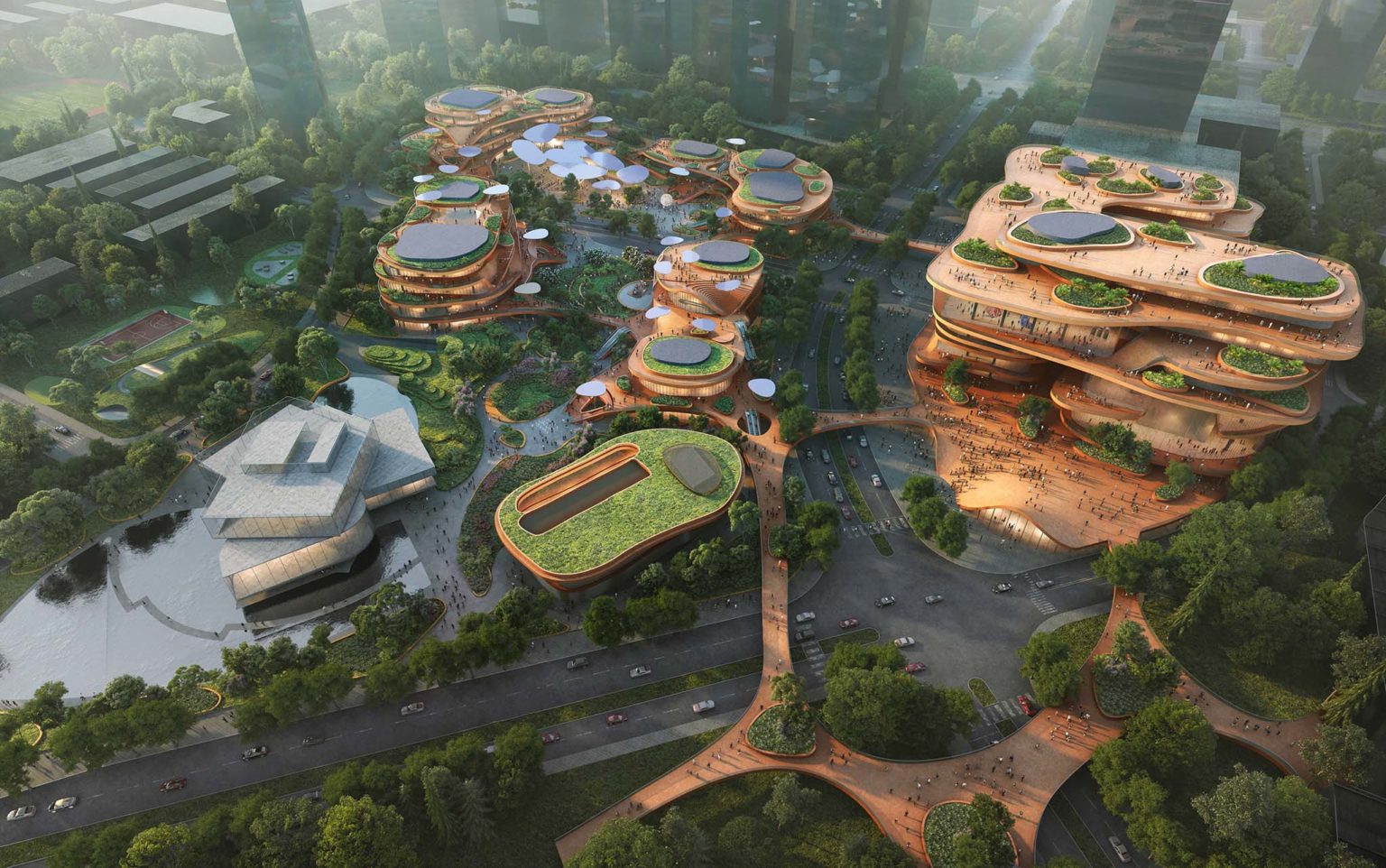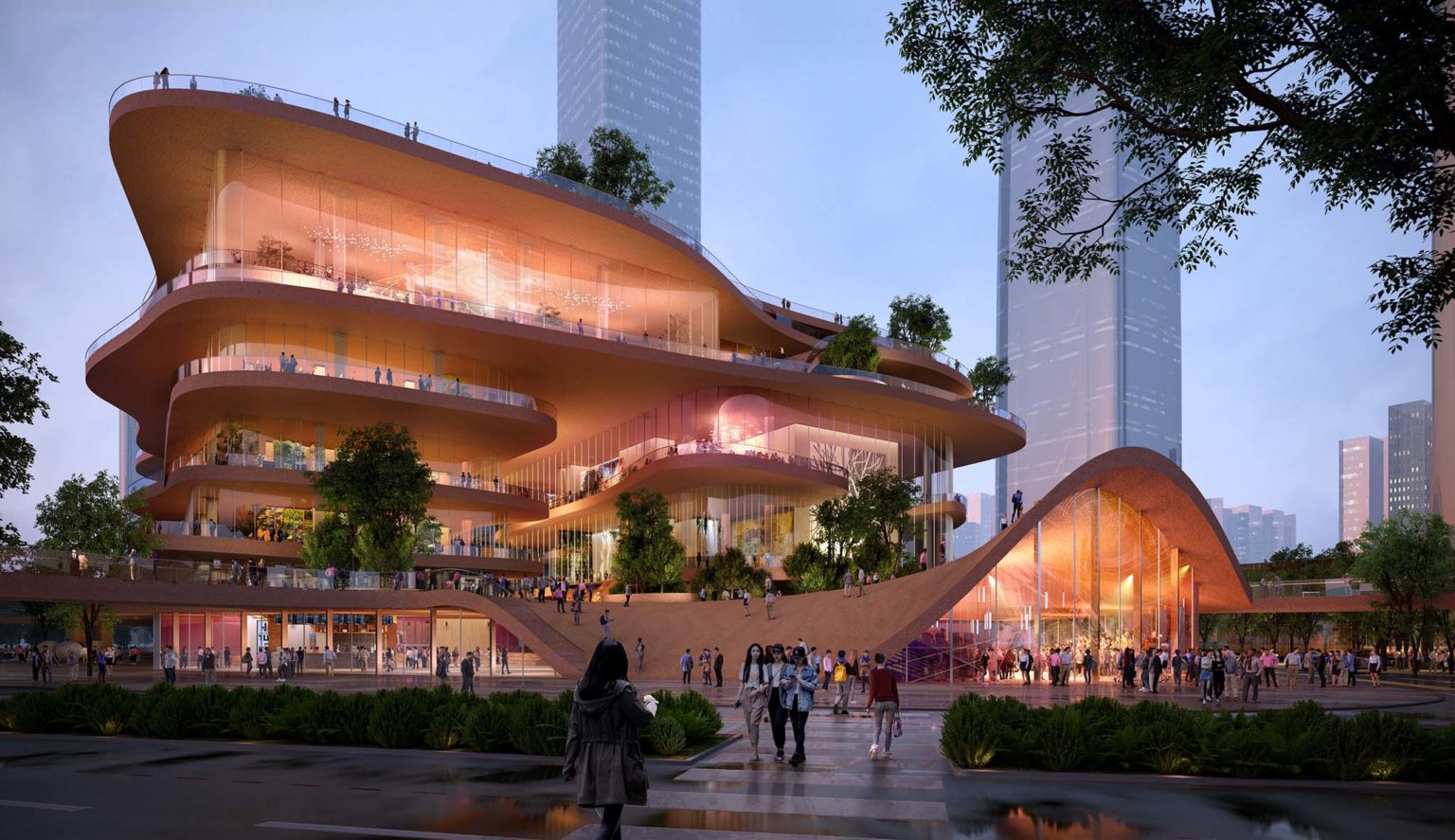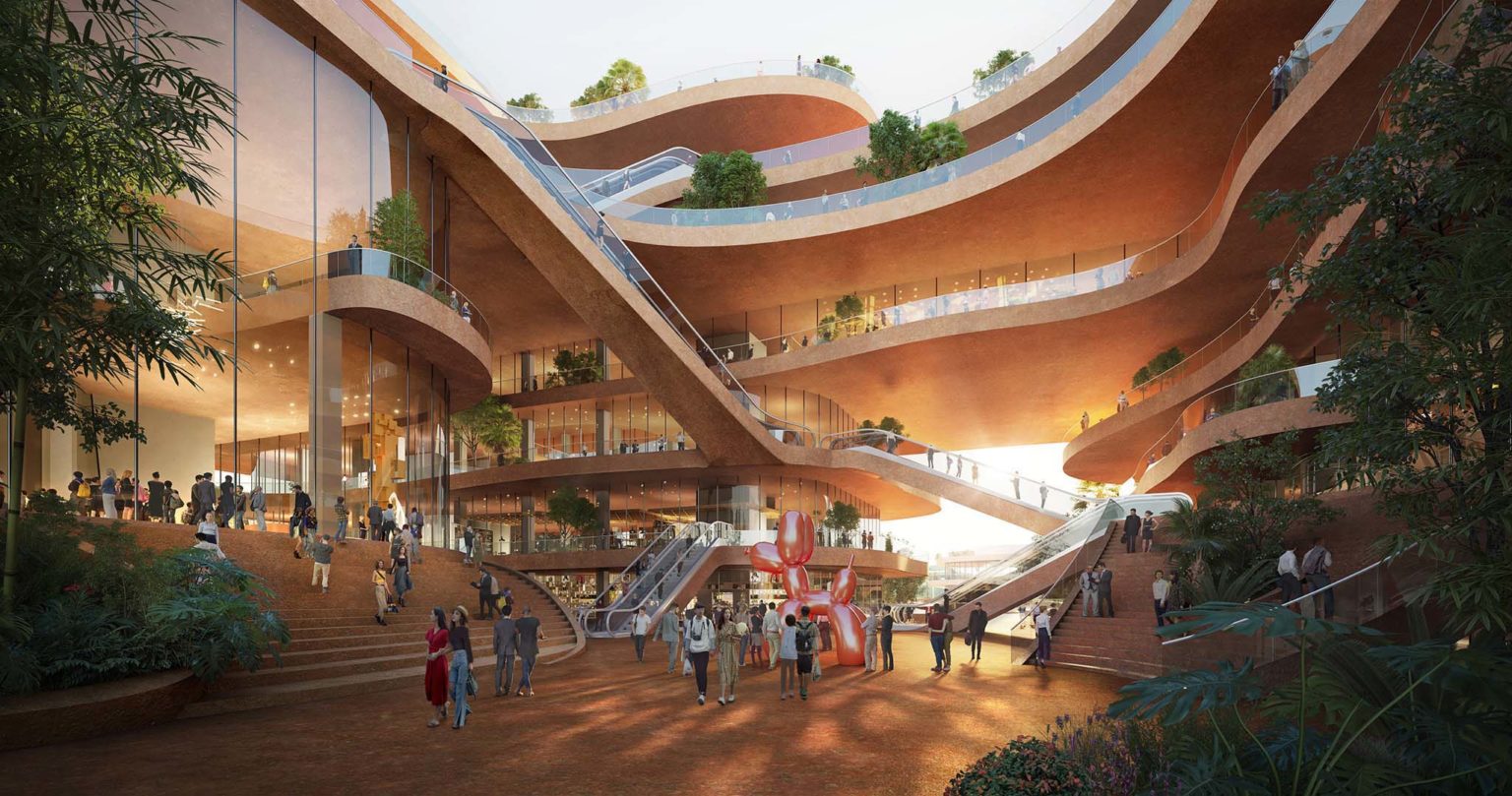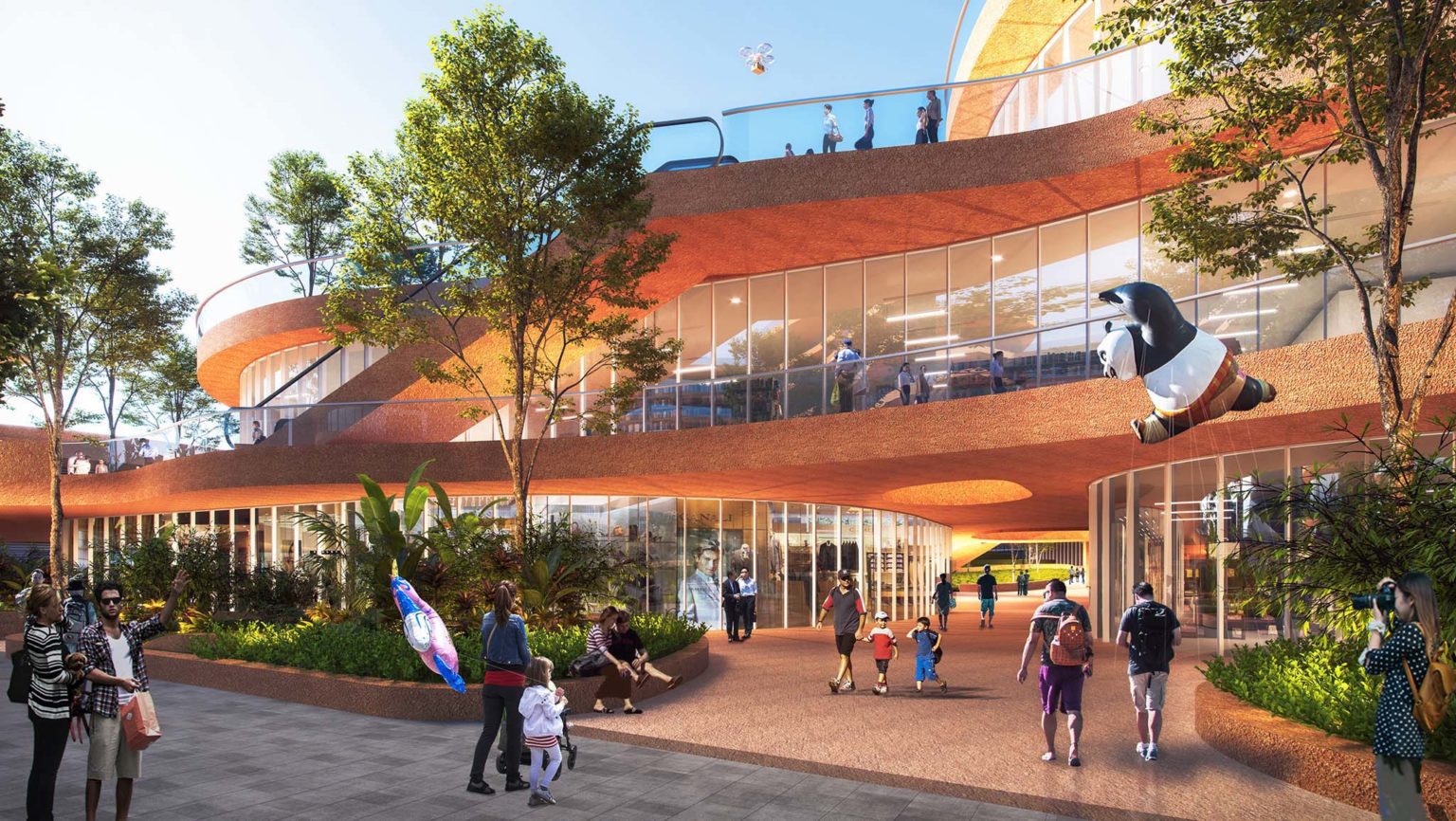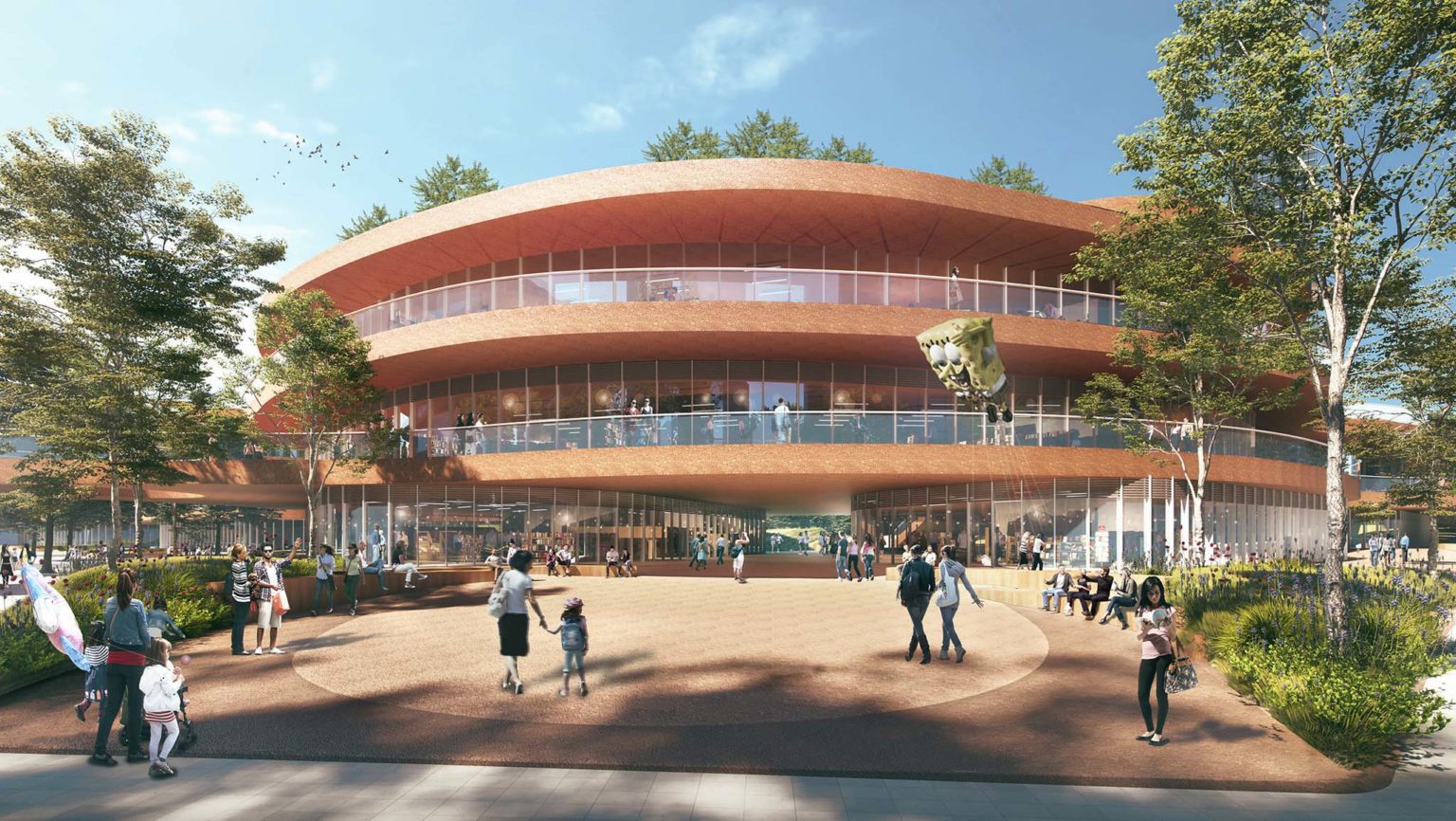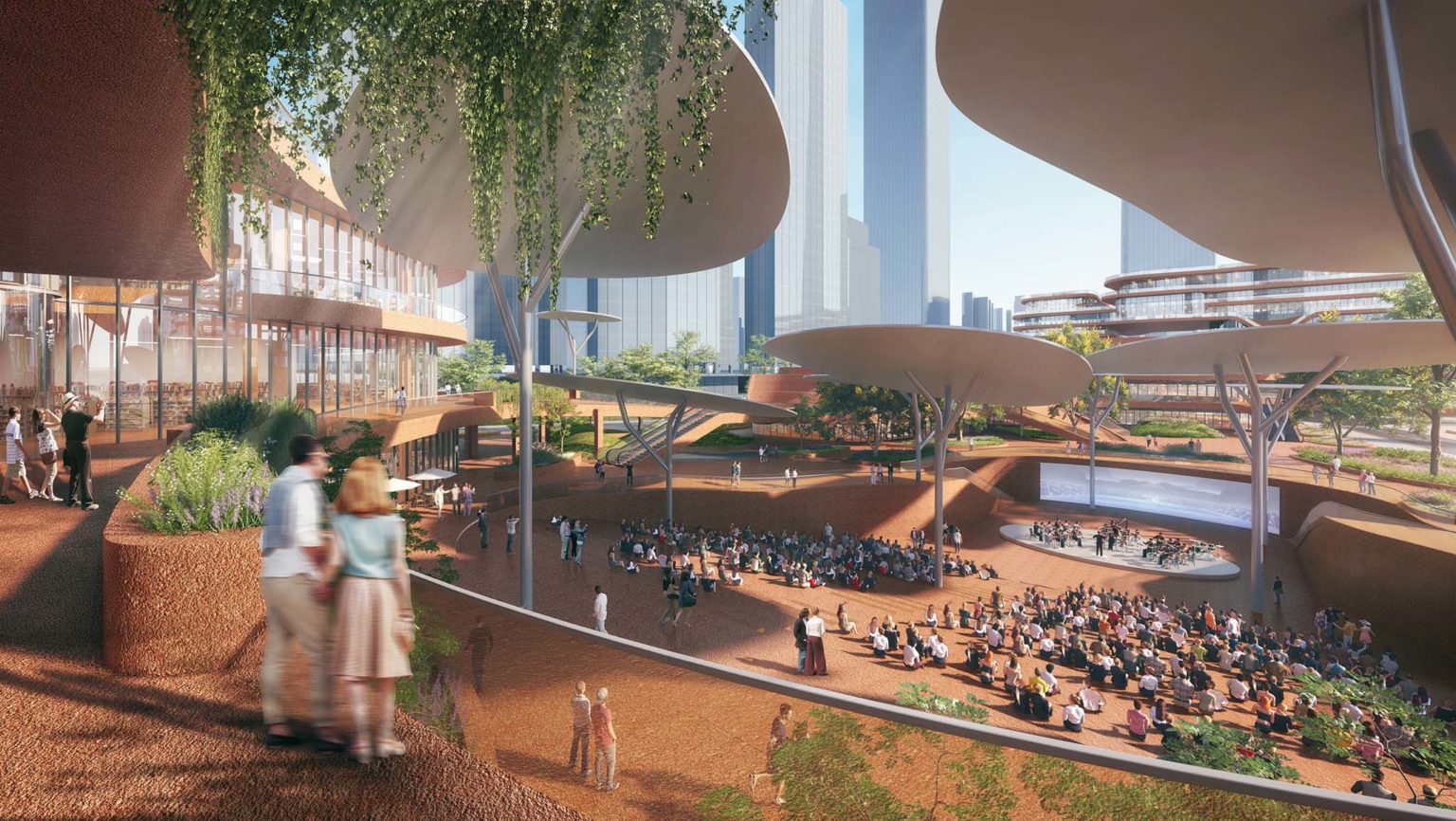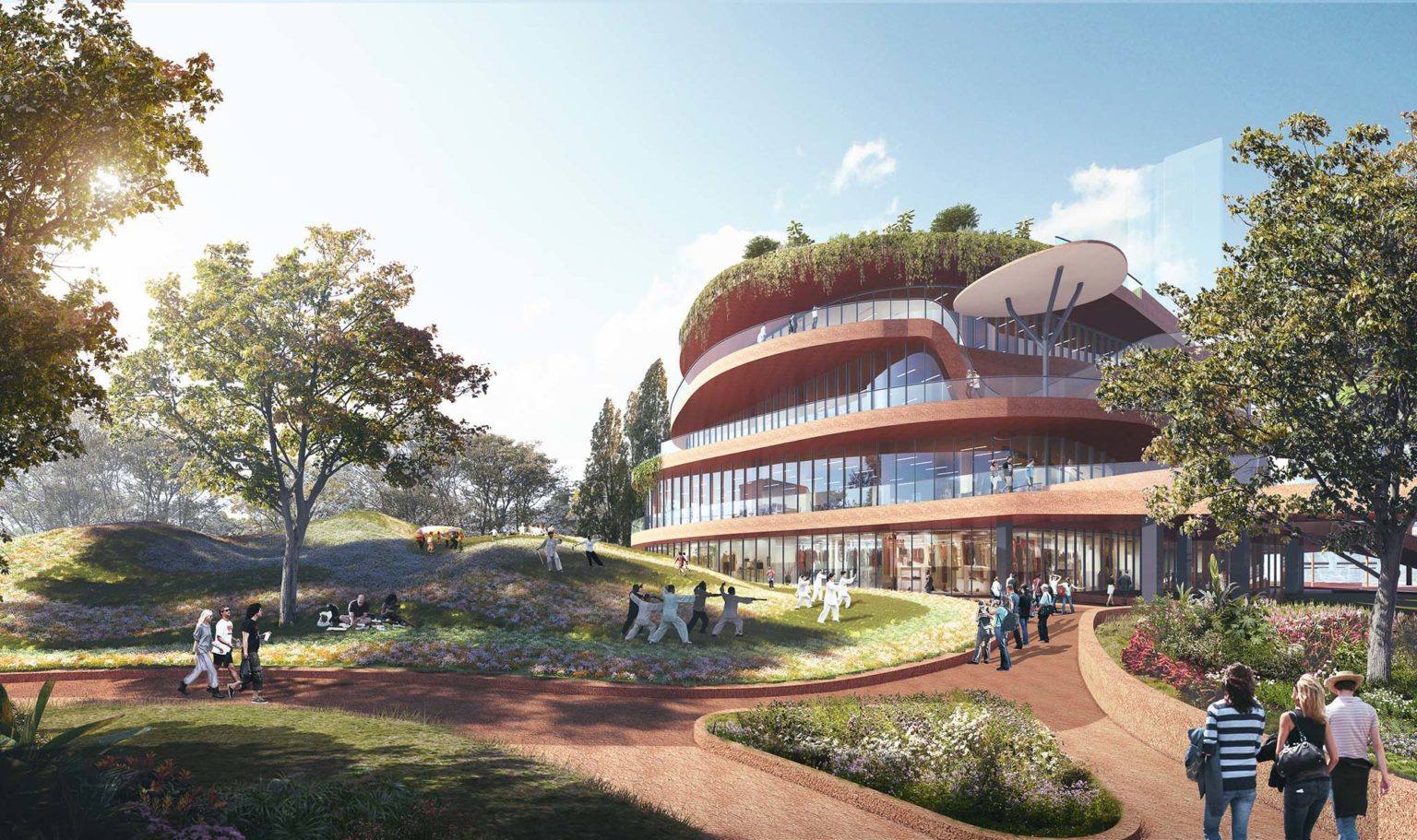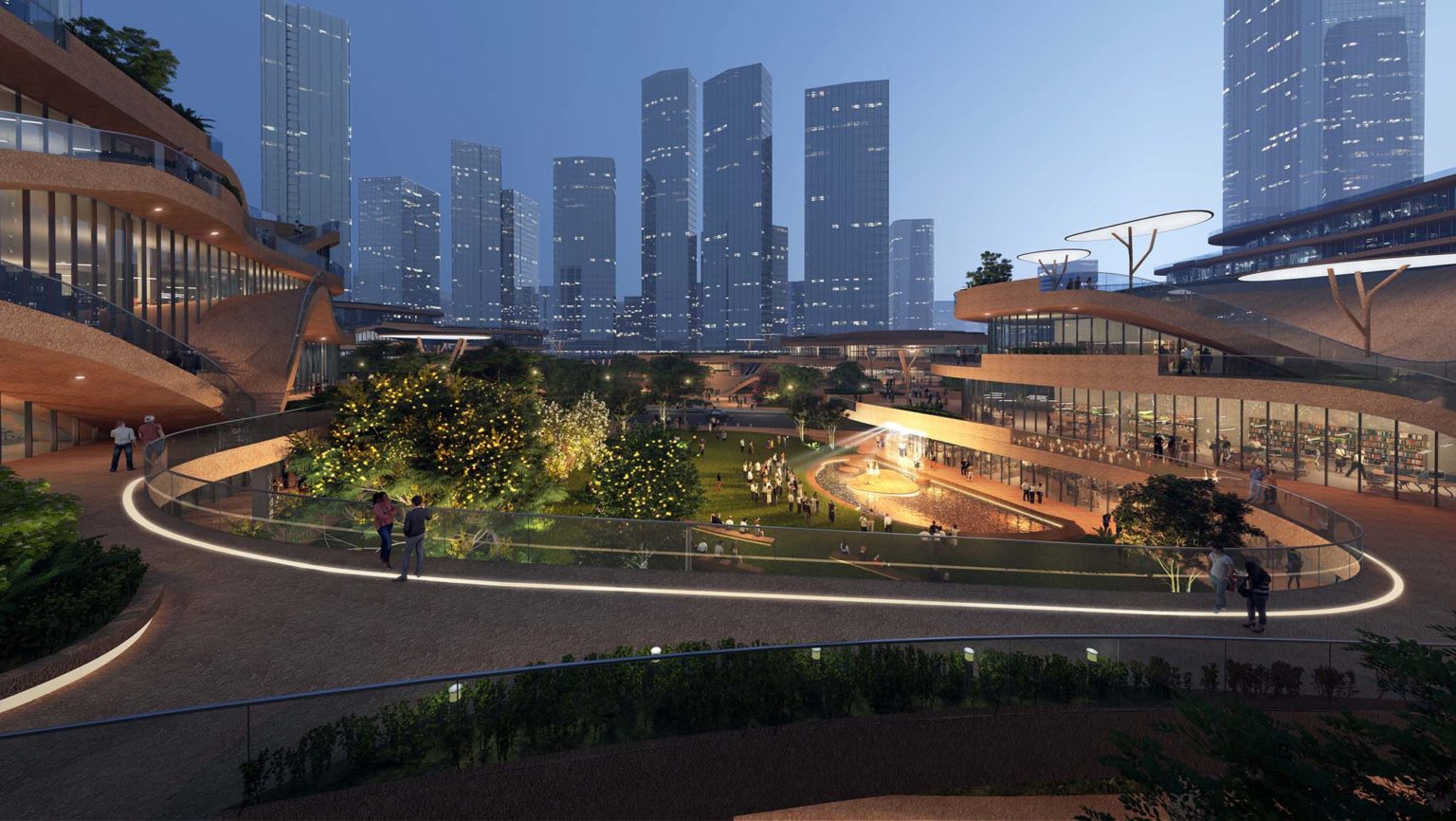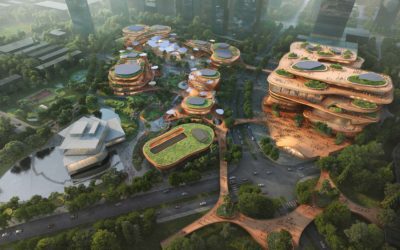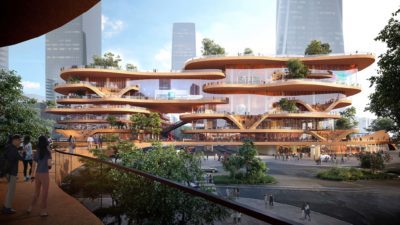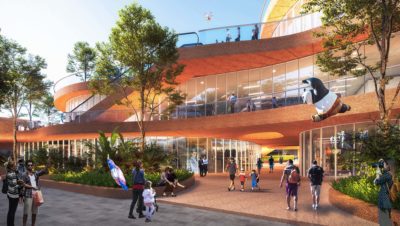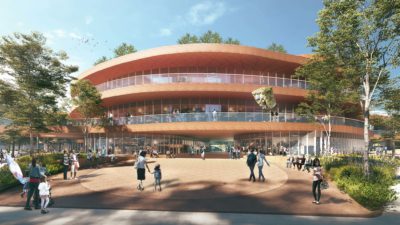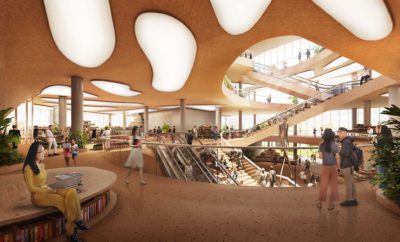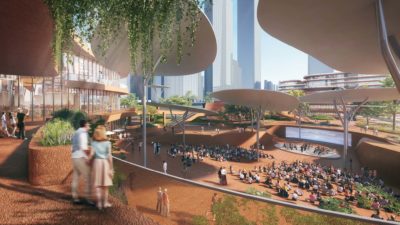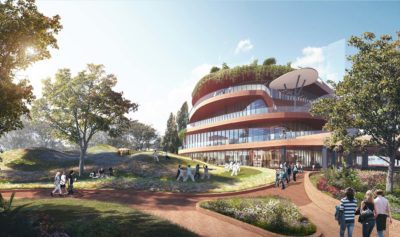Project Credits & Specs
- Architects: MVRDV
- Images: Atchain, lightstudio, MVRDV
- Location: Shenzhen, China
- Area: 95 000 m2
- Year: 2019 –

Project Description
MVRDV has begun construction on Shenzhen Terraces, a mixed-use project that forms the core of the thriving university neighborhood in Shenzhen’s Longgang District. The project comprises a stack of accessible plates containing the buildings’ program, where all communication takes place on the shaded terraces to maximize public life. Designed with sustainability as a focus, the project’s green outdoor spaces mix together with a wide variety of activities – including a theatre, a library, a museum, a conference center, and retail – to make the site a hub for meeting, learning, leisure, culture, and relaxation.
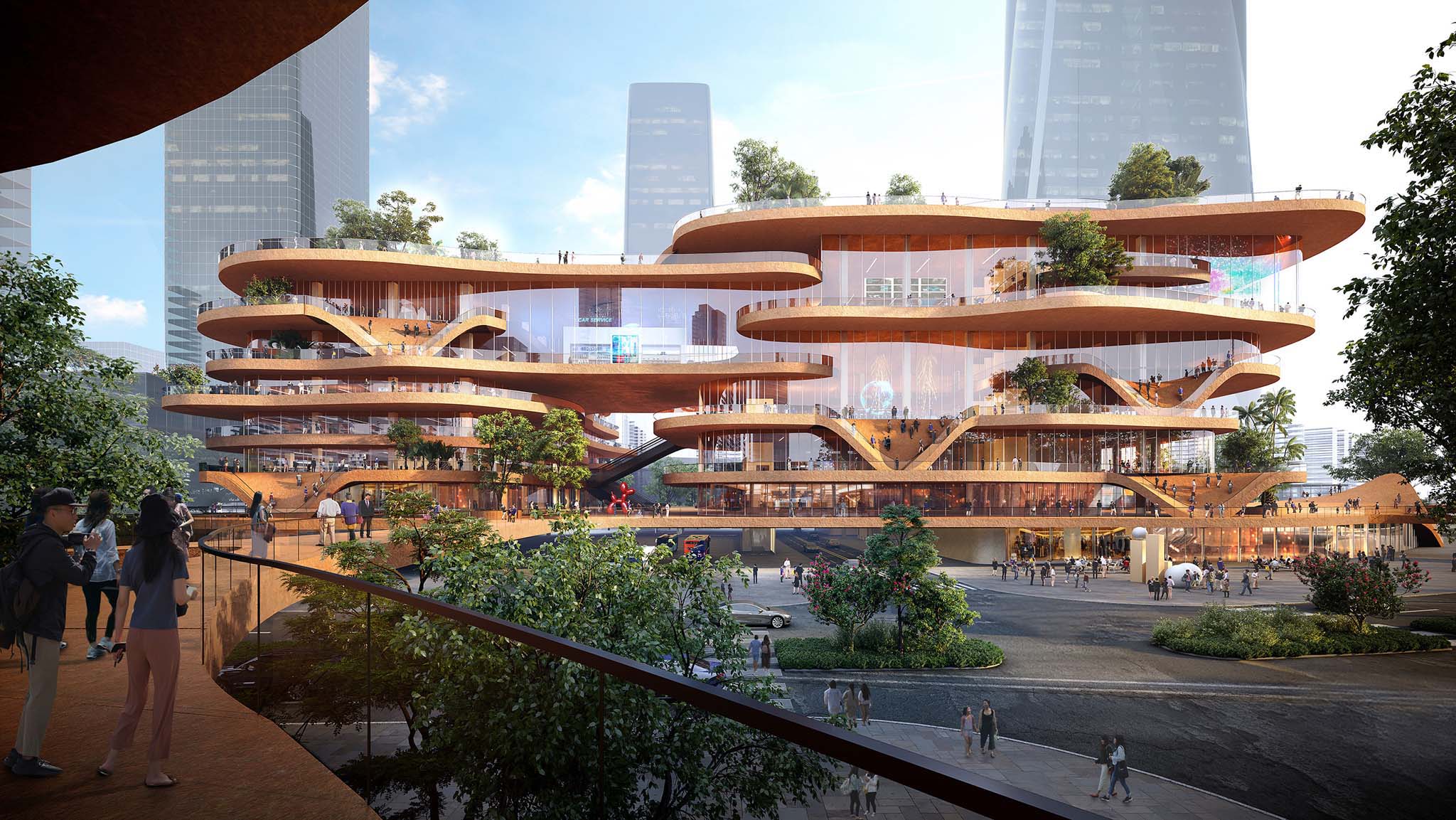

The stacked horizontal terraces provide a valuable contrast to the high-rise towers all around, but they also perform an ecological function: overhangs provide shade and the round shape promotes wind flow and natural ventilation. The abundance of greenery, pedestrian paths, and water features make the project one of the more sustainable in Shenzhen.

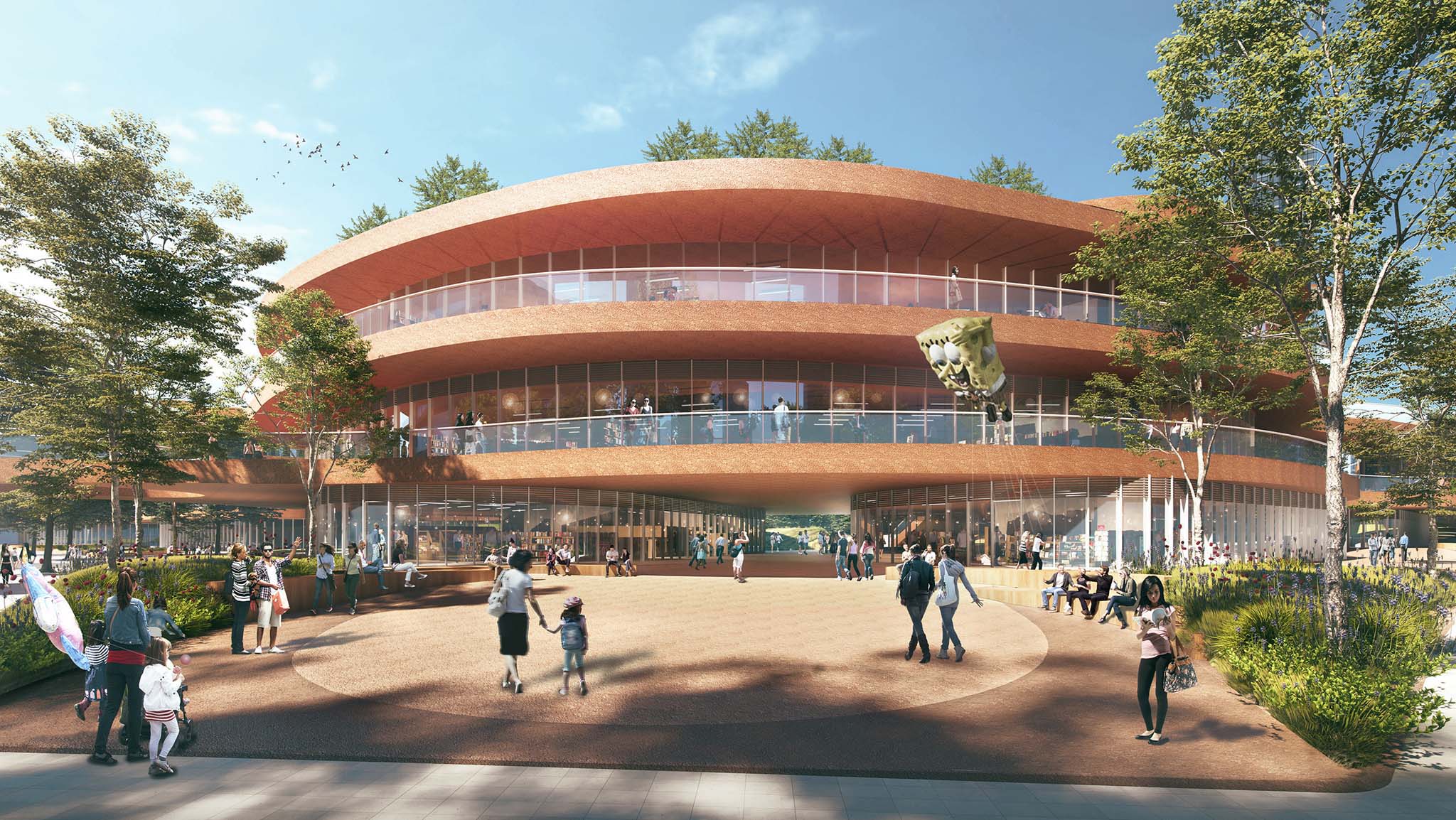
Combining a pedestrian-friendly landscape with no fewer than 20 different programs including public transport, Shenzhen Terraces is poised to become a sustainable hub for the surrounding area. The abundant planting and water features reduce the local temperature and provide a habitat for urban wildlife, while gardens and rainwater collection generate food and water resources.


The edges of the terraces dip at strategic points to form connections between the various floors and to double as small outdoor auditoriums. In other places, the facades are pushed inwards to emphasize entrances and create recognizable places within the scheme to help visitors orient themselves. At the center of the largest building, on the east of the site, the terraces curve inward to form an open-air atrium. In the buildings on the western side of the site, a new library concept defines the complex: rather than a separate entity, the library acts as the glue, divided over two buildings and connecting related educational and commercial programs such as a Youth Activity Centre and a Youth Entrepreneurship Centre, with a “books park” outside. Bridges connect the buildings to turn the second floor into a continuous route and connect Shenzhen Terraces with surrounding developments.
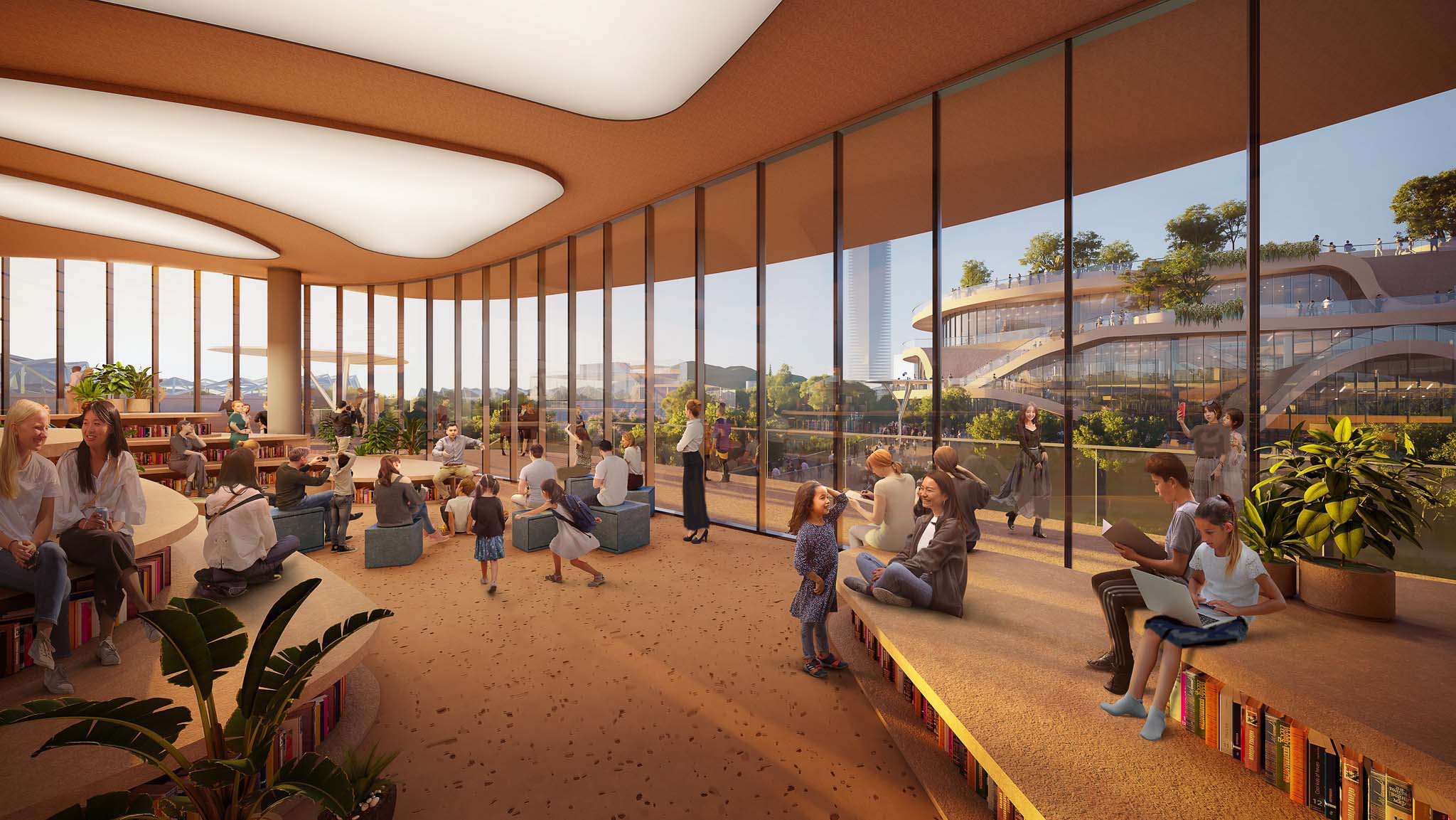
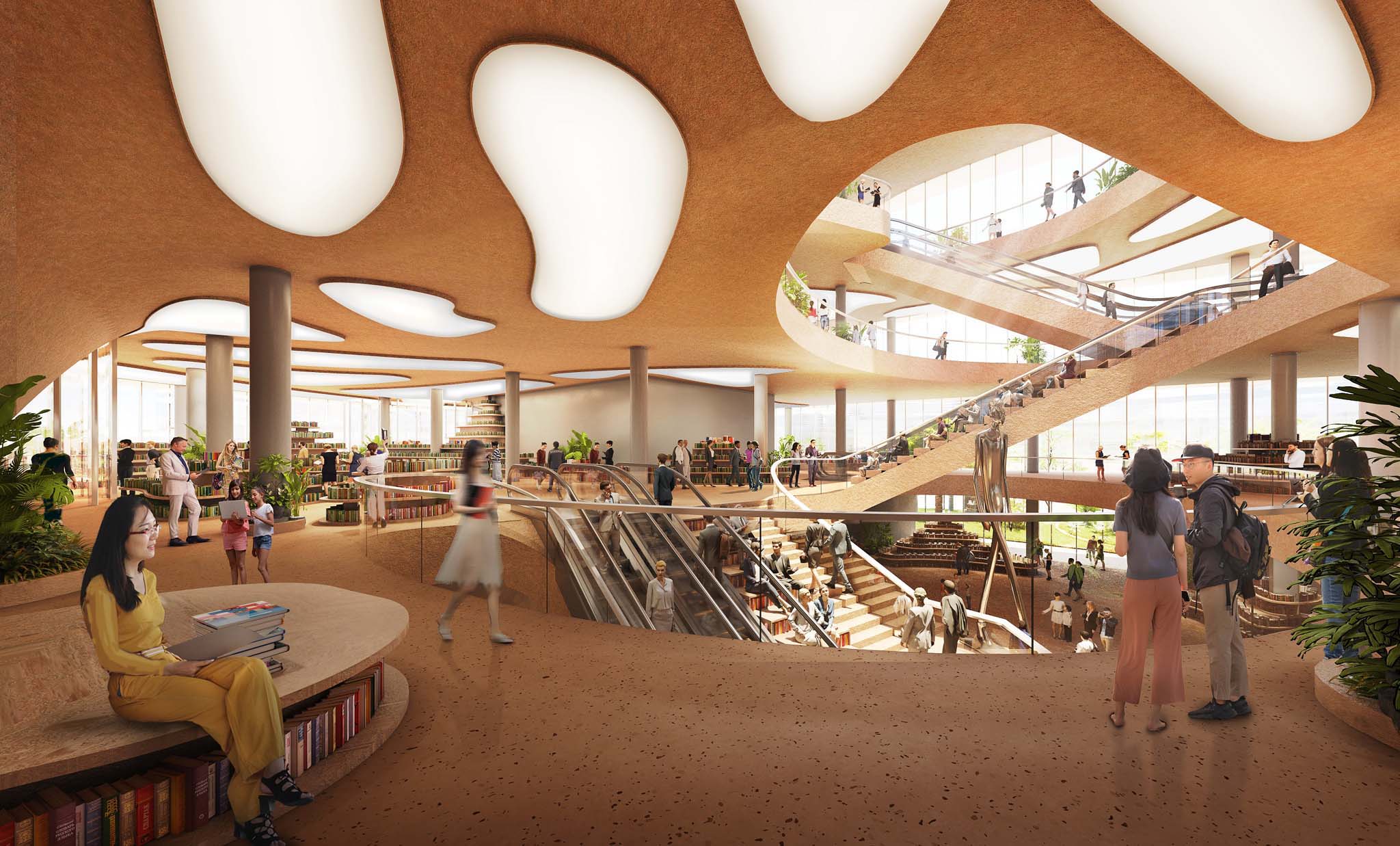
An important ambition for the project was to merge the building with the landscape and make the project as sustainable as possible. The landscaping, developed in collaboration with Openfabric, adds patches of jungle-like greenery and public programming between pedestrian routes. These patches host planting that imitates the region’s sub-tropical natural forests, mixed with features such as grassy hills, public art, reflective pools, and activity zones for climbing or table tennis. The roofs are also part of this landscape, used not only for photovoltaic panels and rainwater collection but also for large, accessible green lawns.
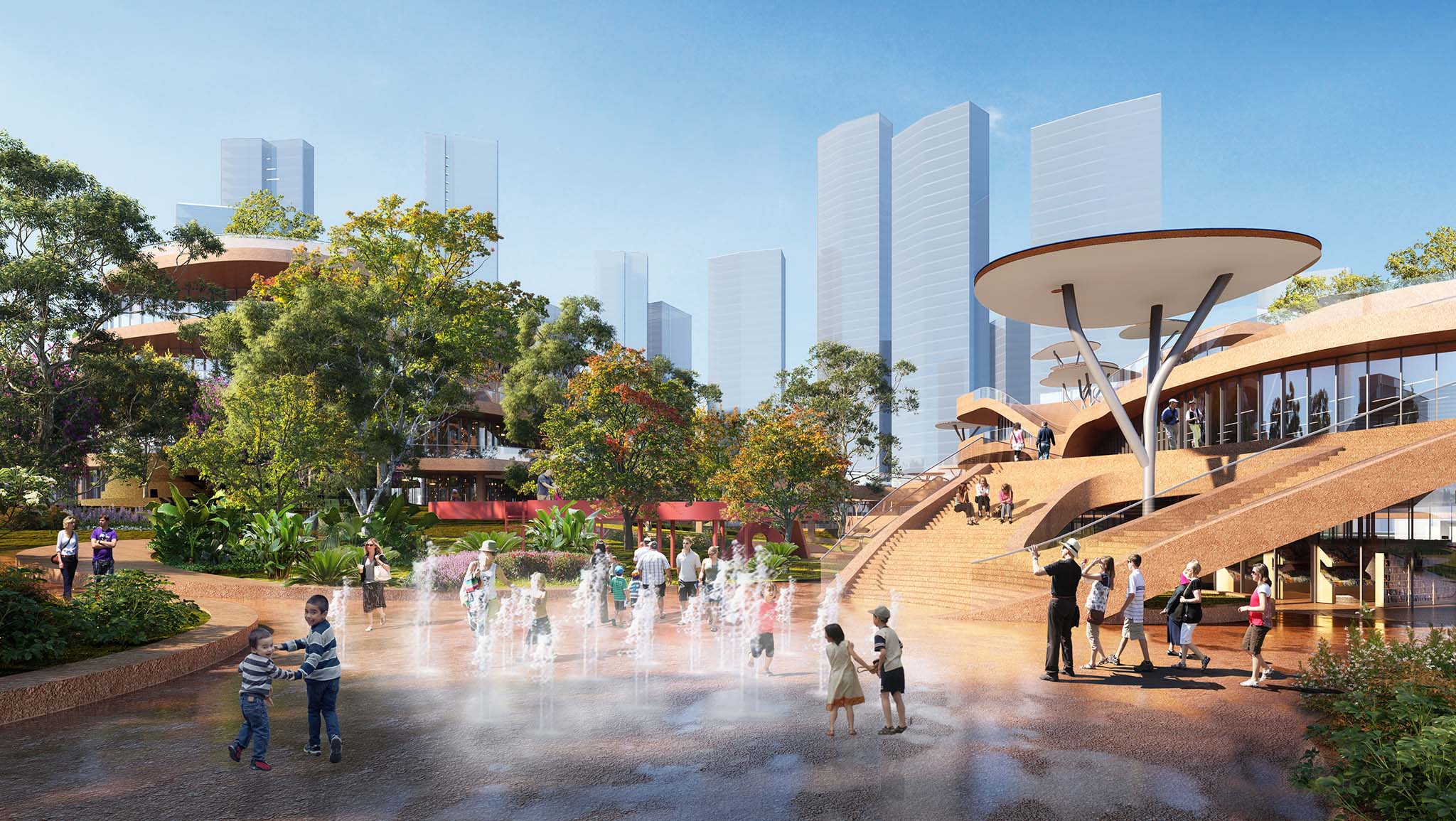
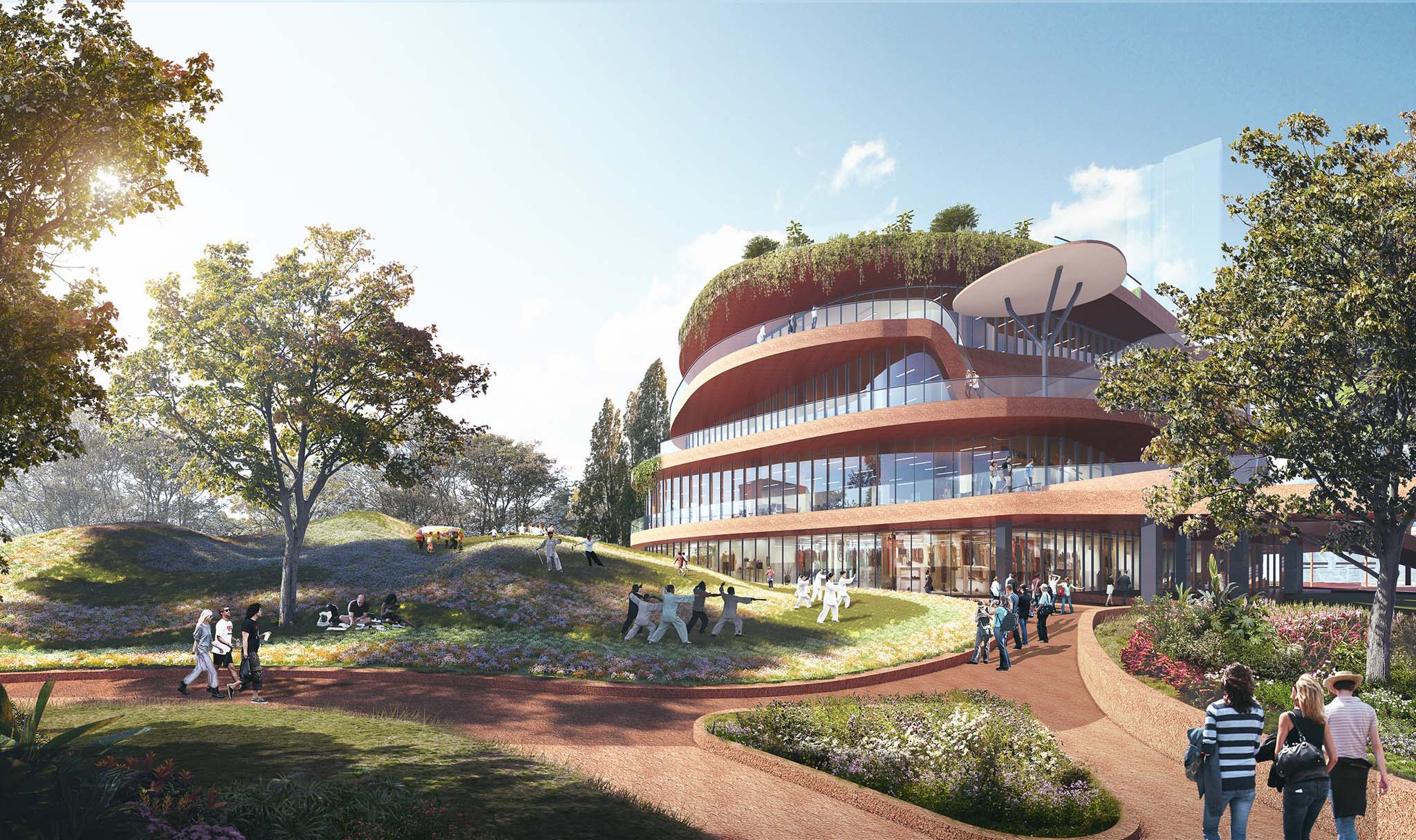
In cities like Shenzhen, it is essential to think carefully about how public space and the natural landscape can be integrated into a dense city. Cool spaces, sheltered from the weather, create an escape from air-conditioned interiors,
says MVRDV founding partner Winy Maas
Shenzhen Terraces can be seen as a three-dimensional park that allows students to walk outside to their lectures in the warm weather instead of being locked inside. In this project we are not working against the climate, but with the climate. The naturally ventilated terraces, protected from the sun by overhangs, will soon become fantastic hangout spots for people to meet and study.
continuous MVRDV founding partner Winy Maas
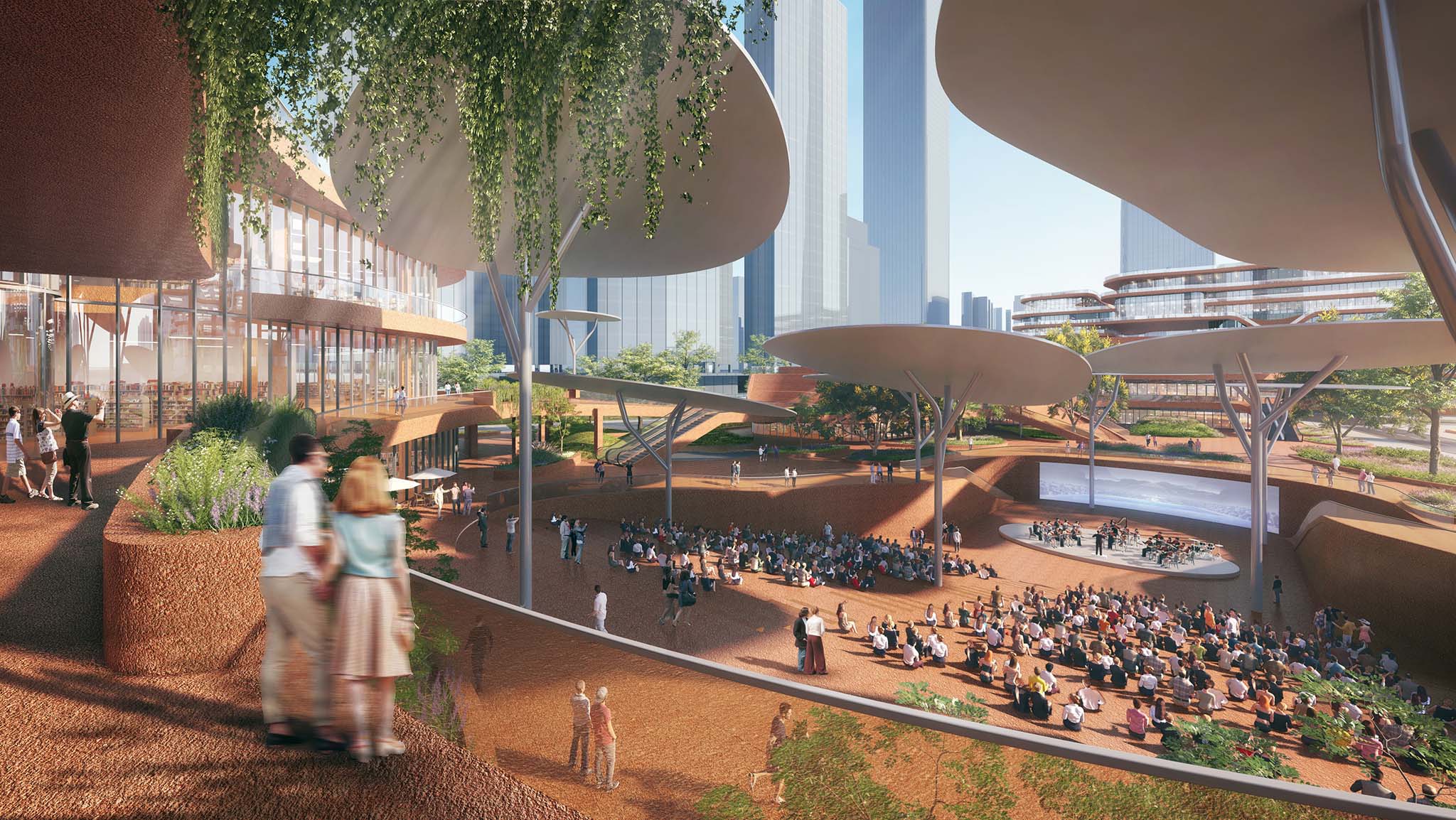

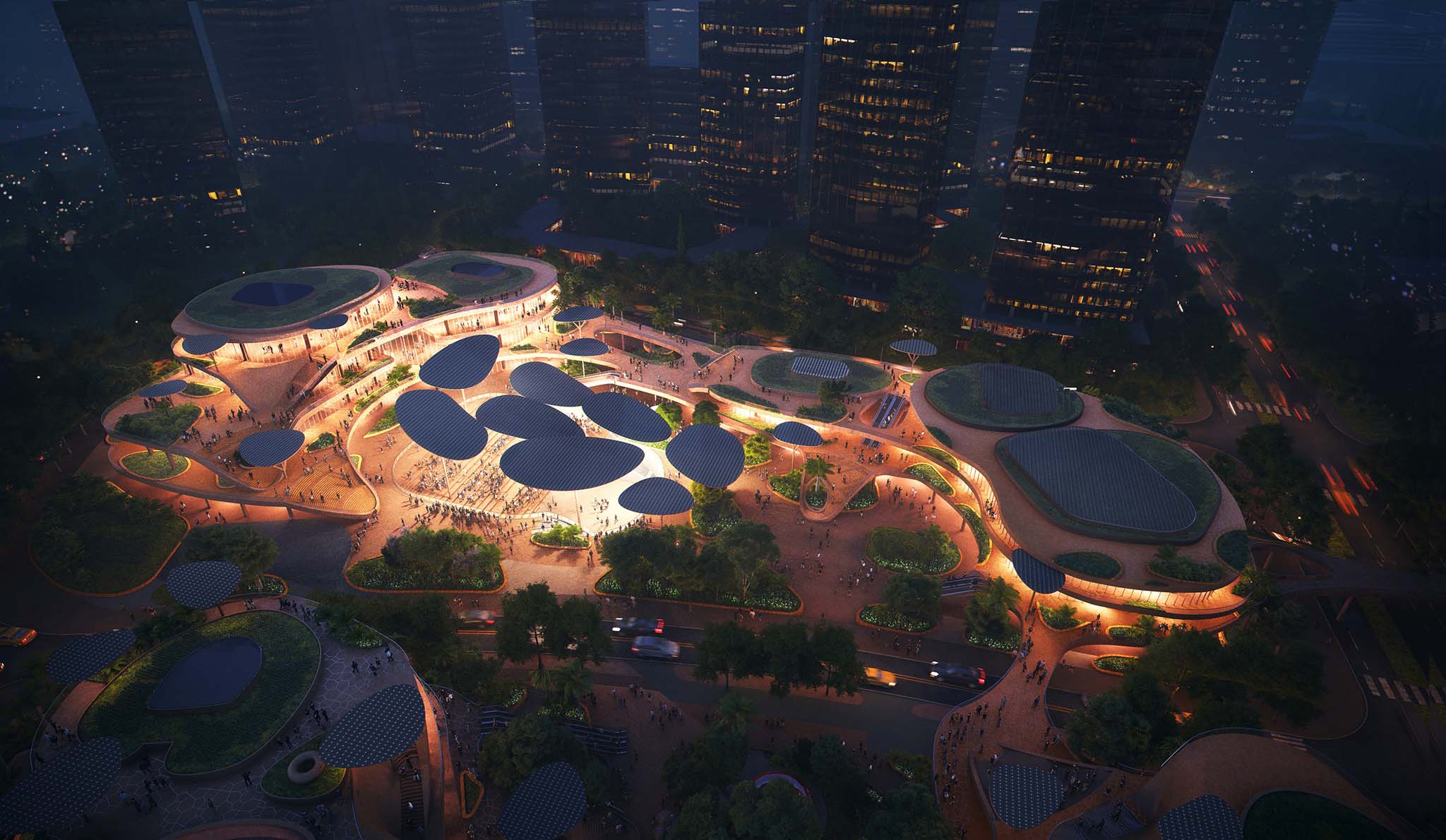

The project description is provided by the architects.
About the Architects

MVRDV was founded in 1993 by Winy Maas, Jacob van Rijs, and Nathalie de Vries. Based in Rotterdam, the Netherlands, they have a global scope, providing solutions to contemporary architectural and urban issues in all regions of the world. Their highly collaborative, research-based design method involves clients, stakeholders, and experts from a wide range of fields from early on in the creative process. The results are exemplary, outspoken projects that enable our cities and landscapes to develop toward a better future.
